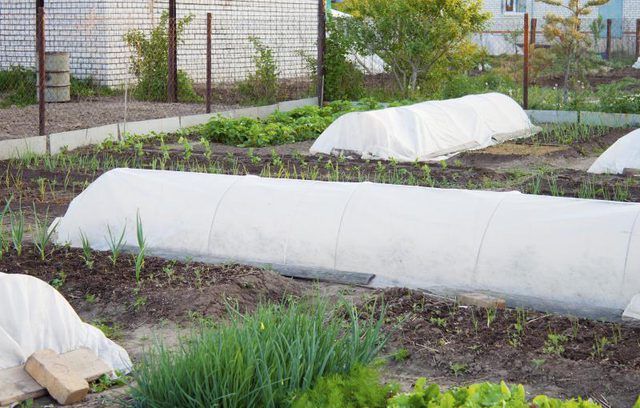Bulbs
Flower Basics
Flower Beds & Specialty Gardens
Flower Garden
Garden Furniture
Garden Gnomes
Garden Seeds
Garden Sheds
Garden Statues
Garden Tools & Supplies
Gardening Basics
Green & Organic
Groundcovers & Vines
Growing Annuals
Growing Basil
Growing Beans
Growing Berries
Growing Blueberries
Growing Cactus
Growing Corn
Growing Cotton
Growing Edibles
Growing Flowers
Growing Garlic
Growing Grapes
Growing Grass
Growing Herbs
Growing Jasmine
Growing Mint
Growing Mushrooms
Orchids
Growing Peanuts
Growing Perennials
Growing Plants
Growing Rosemary
Growing Roses
Growing Strawberries
Growing Sunflowers
Growing Thyme
Growing Tomatoes
Growing Tulips
Growing Vegetables
Herb Basics
Herb Garden
Indoor Growing
Landscaping Basics
Landscaping Patios
Landscaping Plants
Landscaping Shrubs
Landscaping Trees
Landscaping Walks & Pathways
Lawn Basics
Lawn Maintenance
Lawn Mowers
Lawn Ornaments
Lawn Planting
Lawn Tools
Outdoor Growing
Overall Landscape Planning
Pests, Weeds & Problems
Plant Basics
Rock Garden
Rose Garden
Shrubs
Soil
Specialty Gardens
Trees
Vegetable Garden
Yard Maintenance
Protecting Outdoor Plants from Frost
Protecting Outdoor Plants from Frost. Protecting tender plants from temperatures near or below freezing, 32 degrees Fahrenheit, extends production in vegetable gardens and may allow the plants to grow in U.S. Department of Agriculture plant hardiness zones lower than they could ordinarily endure. It's easier to shield plants from radiation frosts...

Protecting tender plants from temperatures near or below freezing, 32 degrees Fahrenheit, extends production in vegetable gardens and may allow the plants to grow in U.S. Department of Agriculture plant hardiness zones lower than they could ordinarily endure. It's easier to shield plants from radiation frosts that occur on still, clear nights when temperatures drop a few degrees than to shield them from the advective frosts and significant temperature drops caused by cold fronts. Use a combination of techniques to provide plants maximum protection from severe frosts.
Individual Plants
A simple covering is effective for individual plants' mild frost protection. It's important to provide plants with a framework that holds the cover away from their leaves and stems. Any plant part that contacts the cover can become cold enough to be damaged. Frameworks can be wooden, wire or cardboard. Covers can be old blankets, burlap, bedsheets, frost blankets or plastic sheets. A cardboard box that covers a plant without touching it also can be used. Covers hold in the soil's heat that was captured from the sun. The covers should go in place in the afternoon before cold weather is expected and should extend to the ground. Remove the covers in the daytime. Covers work only when kept dry. So if rain is also predicted, put plastic over non-waterproof covers. Hold the plastic to the soil by using rocks or bricks so it doesn't blow off the plants' covers.
Vegetable Garden
During light freezes, rows of plants in a vegetable garden can be protected with floating row covers. Such covers provide 2 to 4 degrees Fahrenheit of cold protection. Clear plastic gives 3 to 6 degrees Fahrenheit of frost protection. The row covers or plastic should be held off the plants by arched frameworks of evenly spaced wire hoops, arched pipes or an arched length of concrete reinforcing mesh. Row covers can be left in place, but plastic needs to be opened or removed during the day. For even more cold protection, add a space blanket, such as those used for camping. Put its aluminum side next to the plastic, and remove it the next morning.
Heat Sources
If electricity is available, then an option is to add an electric light bulb or string of Christmas tree bulbs beneath a plant cover to generate heat and provide further frost protection. A string of 25 mid-size Christmas tree lights distributed evenly in a 4-by-5-foot covered space gives 6 to more than 18 degrees Fahrenheit of frost protection, according to the University of Colorado Extension Service website. The string of lights works better than a single, large bulb because its multiple lights distribute heat more evenly. Use only lights and extension cords rated for outdoor usage.
Roots and Trunks
Severe freezes may damage even covered plants' leaves and stems. If plant roots have added protection, however, often they can survive to regenerate new growth in spring. Provide a 2- to 3-inch-deep mulch layer of a non-compacting organic material such as grass clippings or straw on the soil surface above roots, not allowing the mulch to touch stems or trunks, and remove it after the frost danger passes. Damp soil captures heat better than dry soil. So water plants' soil before predicted cold weather for additional protection. Wrap the trunk of each frost-tender tree with an insulating material such as corrugated cardboard, layers of cornstalks or fiberglass. Add an outer layer of plastic if rain is predicted. Keeping the ground under trees free of debris and weeds allows better heat radiation.